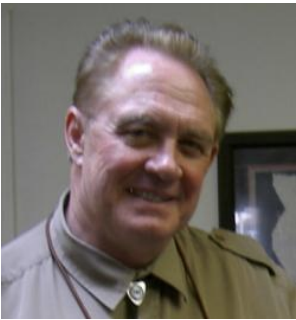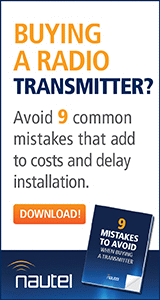Tower Tales From The Inspection Trail

[December 2020] Does your station use a tower to transmit? Then you probably know that you have to meet certain FCC and FAA rules, and conduct regular inspections to ensure compliance. Regular inspections can help you keep everything in top order.
Broadcast towers have long played an important part of the Alternative FCC Inspection Program (ABIP). During my 25 years as an inspector, I have tried to help stations focus on ensuring this part of the transmitting plant was as good as possible.
During the first three or four hundred station visits we encountered or learned about several incidents of deadly tower-plane crashes and or “close-calls.” For obvious legal reasons I am restricted from identifying stations involved. But, trust me, the incidents I will describe are factual events.
Basic FCC/FAA Requirements
When discussing towers, all stations must comply with both the FCC and FAA requirements for location, height, paint, lighting, and registration.
As an independent ABIP inspector, one of my key responsibilities was to ensure compliance – and that broadcast licensees understood why this was important – before my wife and I would leave their locations.
So, when I visit a broadcast station, what am I looking to find before I can comfortably “certify” a tower is in compliance? Here are six major aspects that I use during the inspection to certify a tower is in compliance, which you can find in Section II of the FCC’s Self-Inspection Checklist:
- Registration: If required, the FAA registration and the FCC ASR registration and proper posting of the tower’s registration number. (per Section 17.4)
- Location: I use my trusty GPS to determine with the exact location within one second while standing at the tower’s base.(Section 17.4 (j))
- Height: assuming the sections and paint bands are equal we use a tape measure to determine its length of the bottom section and multiply this length by the number of bands (usually seven). No rocket science here! (Section 17.4)
- Lights: If the tower is lit, determine proper operation, including flash rate, non-use of clock to control on/off rate, daily inspection and log entry, quarterly maintenance checks. (Sections 17.47, 17.49)
- Paint Color: I still use one of those $65 cardboard color charts, although it is not the only way to vet a tower’s paint.
(Sections 17.23, 17.50)) - Visual Inspection: Proper fencing around tower with vegetation under control.
(Section 73.49)
Where it Should Be
When arriving at the tower site, I start by looking for the ASR number. The ASR database contains the exact coordinates of the station, height, and other information on the tower. The tower owner should match the ASR data. (Stations are required to file an ASR amendment within five days of a sale.)
If a tower is over 200 feet, or is situated where it might interfere with a local airport, it must be studied by the FAA for approval and registered with the FCC ASR database. Then the number must be posted on the tower, tower fence, or, if the tower is not visible from the entry point at the street.
Of course, it is important that the tower actually be where the license says it should be. Periodically, the FCC issues Notices of Violation (NOV) for stations that are found to be anywhere from a third of a mile to several miles from the authorized location. One station, operating at an unauthorized site for some five years, got the “D” penalty – it was deleted.
There was an incident I learned about where a farmer sat comfortably watching a tower crew construct a three-tower AM Directional for about week until he saw the crew packing up. Then he strolled over to the site and asked “What the hell are you doing on my property?” Long story short, the coordinates had been misread and in the end the farmer took the licensee for four times what his land was worth.
Details Matter
That incident prompted one of the “Bennerism Wizdomics” to check and recheck everything you calculate.
On the inspection trail, I once found a tower less than 400 feet from a small airport landing strip. Nevertheless, that tower was just under 200 feet and therefore not required to be painted, lit, or registered, permitting me to certify the station.
On the other hand, one group of stations that I inspected decided to complicate things by insisting I confirm the height of their towers as registered with the FCC. In my 70’s, as I was not going to climb the towers, I had no other choice but to use my one-hundred foot tape measure.
Using the angle to the antenna peak and some trigonometry, I could calculate a reasonable estimation of the actual tower height.
However, that practice ended real quickly when the accuracy was questioned by the station. In the end, it all involved more time and trouble than it was worth. After all, most any surveyor can give an exact height measurement of a tower in minutes.
Lights and Paint
It only takes a moment with a watch to count the flash rate of the lights on the tower.
Perhaps a quick note: Recent changes in FAA requirements mean a bit more time is needed for stations to check out the type of lights they are installing. That is because of recent adoption by many stations of LED lighting.
LED lights are just fine by FAA standards, so long as they contain IR emitters. The FAA has determined that lights without IR emitters may be invisible to aircraft using zero-visibility fight equipment to see the heat signatures of lighting in bad weather. The use of IR emitters – now required in all new installations – should include separate alarms that would indicate system failure.
In fact, the changes in recent years of the FAA/ FCC requirements – such as all lights in a directional array should flash in unison – means that stations would be well advised to ensure they are meeting the rules that pertain to their particular situation.
Can You See Me Now?
During daytime, most towers have been painted for visibility. But, stations should remember there is another reason for painting: protecting the tower from rust, etc.
Earlier I mentioned the color chart that I use to ascertain the condition of the tower paint, when required by the license for visibility. It is the “FAA In-Service Orange Color Range Chart,” and is available from several sources for around $60-65. It is relatively easy to hold the chart up to the tower and determine if the paint is not faded excessively.
Alternatively, in general, the FCC folks will accept placing yourself one mile from the tower, and if you can determine clearly the “Aviation Orange” bands you are likely compliant.
The Right Color
I was inspecting the best managed, most profitable (for its size) small market AM/FM in the country owned by a close friend of mine who, realizing I would soon be visiting his station, arranged to have his tower painted.
As we stood at the base, admiring the lovely new-looking tower, I noticed something not quite right. Now, we all know a tower over 200 feet must have both the top and bottom bands Red (OK — as described in the rule book, read that: “Aviation Orange”).
Long story shortened: I noticed the bottom 20 feet was actually baby-bottom pink. The painter had run short of the Aviation Orange paint and simply thinned it out with a bit of white as confirmed with scrapings we sent to Sherwin-Williams who confirmed our suspicion and provided the proper color at no cost.
Do Not Try to Fool Me
Often inspections uncover problems that cannot be fixed immediately. Sometimes to avoid a return visit to deal with one issue, an inspector will settle for a signed statement the fix was made.
Of course, it seems like there are always some who would take improper advantage of this kind of accommodation.
This incident involved 3 or 4 (over 200’) towers all owned by the same firm. The towers were close to the Pacific Ocean subject to continuous salt-spray and rusted with absolutely no visible paint.
I certified those stations on the basis of a signed statement that those towers would be painted within 30 days.
Thirty-one days later I called the group and asked if those towers were now painted.
“Oh yes Mr. Benner and thank you so much for your wonderful inspections and helping us to be FCC compliant.” “Hmmm”, I said to myself, and asked who they had paint their towers. I was given the name of a very credible paint crew that I was familiar with. Yet, when I called the firm and complemented them for the job they did on those towers, their response was: “What hell are you talking about – we haven’t painted those towers in fifteen years!”
Thus my next step was to obtain a photo of those unpainted towers, prep a memo to their regional FCC Engineer rescinding the station certificates, and faxed a copy to the stations involved.
Within minutes I received cries for mercy, pleading, praying, crying for mercy to which I responded, “what if a plane crashed into those towers?”
Oh yes! Trust me, any good inspector (FCC or ABIP) will follow up to ensure agreements are kept and repairs made.
It is Not Just the Fence
Ok, one more fun-filled experience. This is related to the requirement that towers with RF potential have secure fences that are locked.
When I check the fence and gate at a station, I always check out the area inside the fence. Stations that have strong maintenance programs ensure that vegetation is kept in check and is not allowed to grow near the radiators. Still, a period of good weather and rain might support a lot of growth that needs to be checked from time to time.
How important could this be? After one inspection, where I had advising him to rid his tower’s base area of a large number of weeds, an AM station owner called, saying he wanted to grant me “Sainthood” for doubling his coverage.
Keeping your tower(s) in good shape makes passing inspections a snap, and helps ensure your signal gets a good launch.
– – –
Ken Benner, CBRE, NCE, has served as an inspector in the FCC’s Alternate Broadcast Inspection program for the past 25 years. Contact Ken at: bennerassociates@me.com
– – –
Would you like to know when other articles like this are published? It takes only 30 seconds to add your name to our secure one-time-a-week Newsletter list. Your address is never given out to anyone else.

